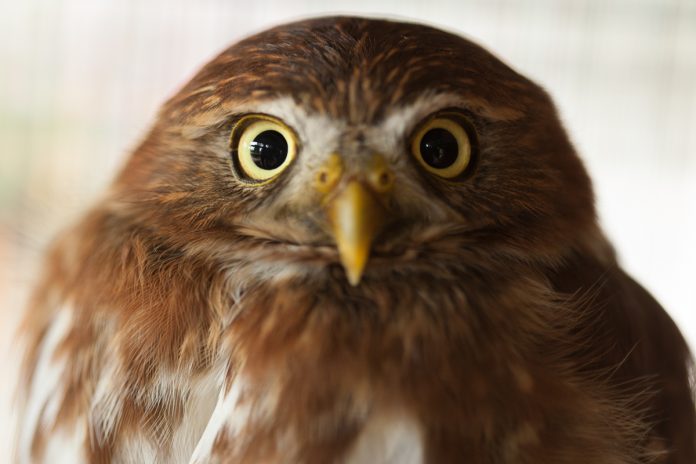There are 17 different species of Owls patroling the Costa Rican forests. Here is a description of four of them that are a must-see for those who love birdwatching.
 English Name: Spectacled Owl
English Name: Spectacled Owl
Spanish Name: Buho de Anteojos
Common Name: Oropopo
Size: 48 cm (19 inches)
Number of species known by this name: one
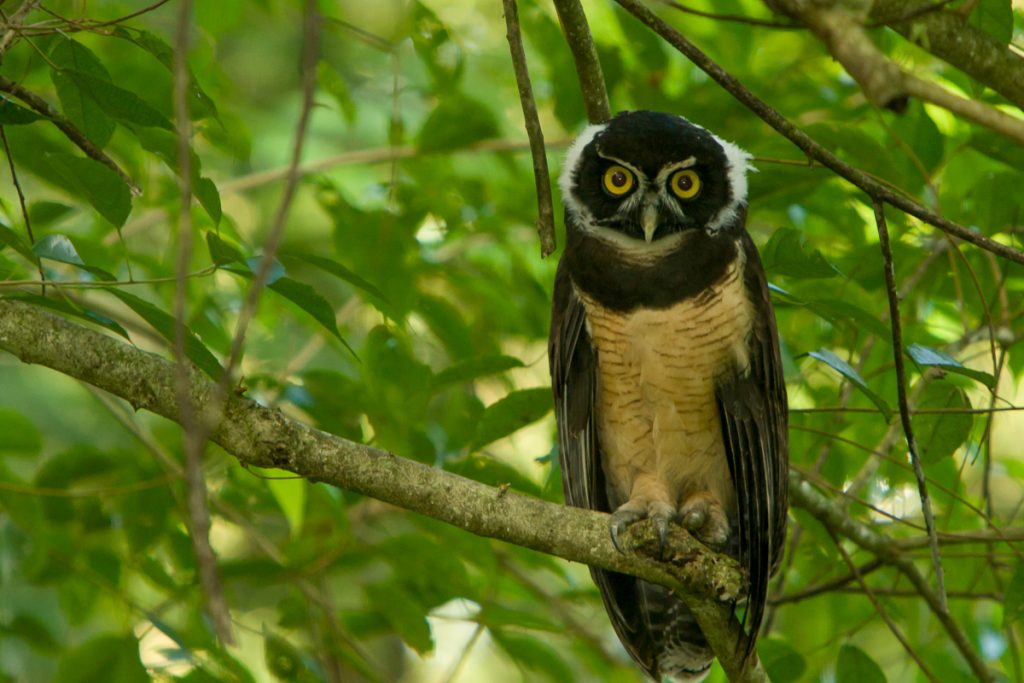
Costa Rica’s largest and most dominant owl is the spectacled owl, whose name is derived from the white facial mask framing its round tuft-free head. Young chicks are bright white balls of downy feathers, and as they mature their body plumage slowly turns to a more characteristic dark brown or black. This owl often roosts near rivers and streams in the lowland forests of both coasts, hunting an array of medium sized prey in the night. The call is a series of bubbly descending POP-POP-poo-poo chuckles resembling the shaking of a sheet of metal.

English Name: Pygmy-Owl
Spanish Name: Mochuelo
Common Name: Cuatro Ojos, Mahafierro
Size: 15 cm (6 inches)
Number of species known by this name: three, Costa Rican Pygmy-Owl, Ferruginous Pygmy-Owl, Central American Pygmy-Owl.
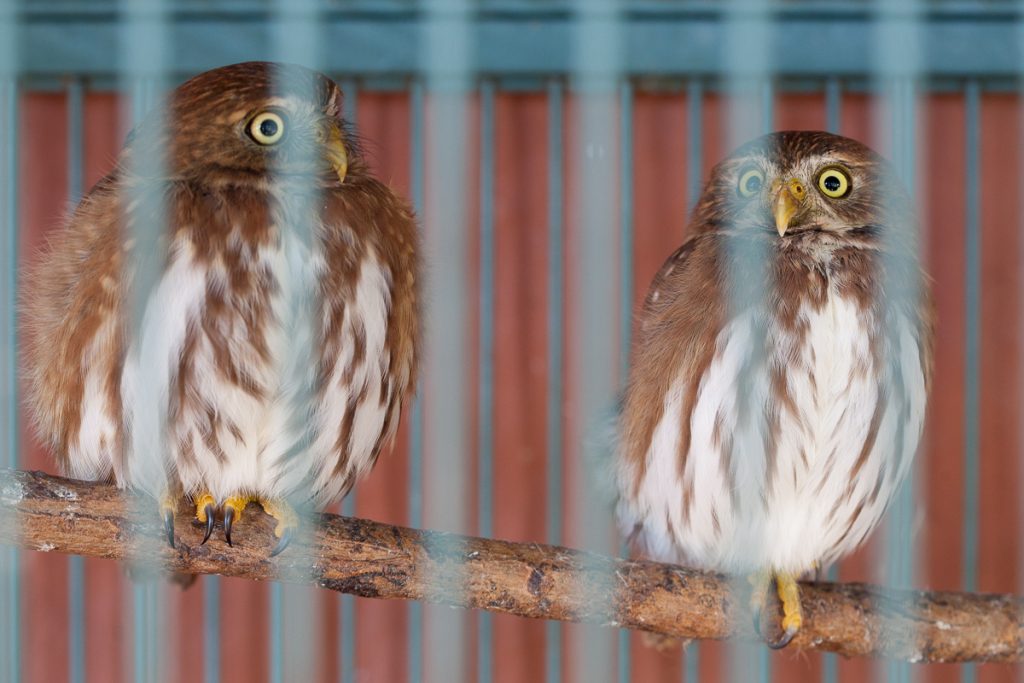
Costa Rica’s smallest owls are the endearing pygmy owls. These ferocious little raptors are also amongst the most active during the day, and can be seen hunting songbirds, large insects, and lizards in various habitats throughout the country. Keep a sharp lookout for bright yellow eyes and beaks peaking out of the old woodpecker holes they often use for nesting. The call is a long series of evenly spaced monotone hoop-hoop hoop-hoop toots usually heard in the early morning or late afternoon.

English Name: Crested Owl
Spanish Name: Buho Penachudo
Common Name: Crestada
Size: 41 cm (16 inches)
Number of species known by this name: one with two morphs, pale and dark.
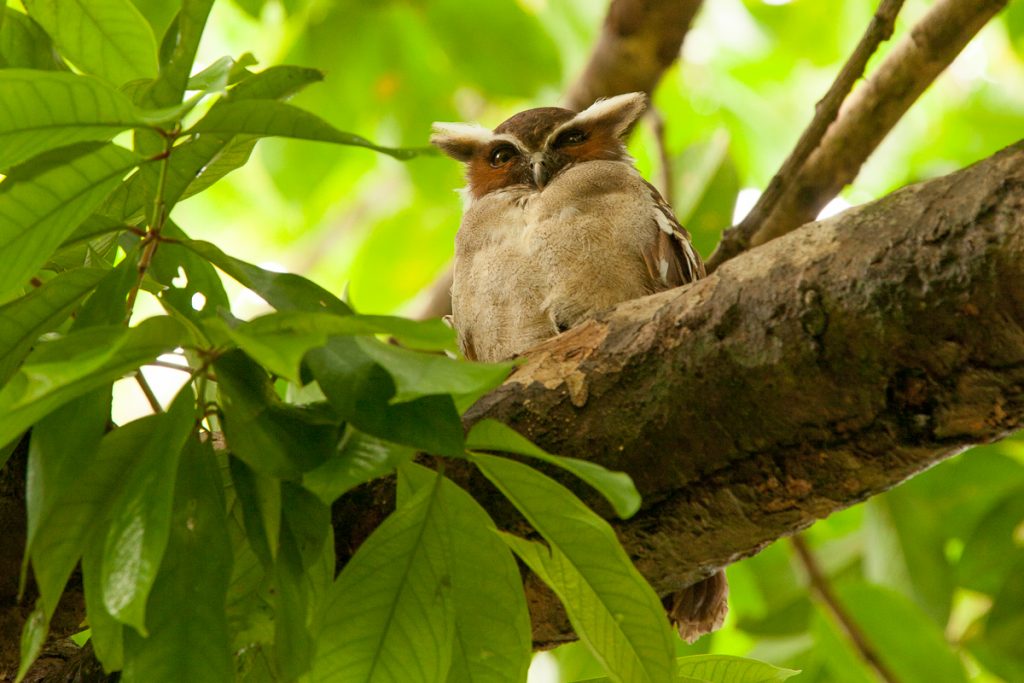
No other Costa Rican owl has such indistinguishable elongated ear-like feathers adorning the head as the crested owl. The species is monotypic, or occupying a biological family all its own. Even though the owl is widespread on both coasts, due to the lush overgrown habitat it prefers to roost and hunt in it’s often challenging to locate. More often heard then seen, their primordial k-k-kROOOOOK call or croak often echoes through the night in the lowland rainforests they inhabit.

English Name: Screech-Owl
Spanish Name: Lechuzita
Common Name: Estucurú, Sorococa
Size: 23cm (9 inches)
Number of species known by this name: four, Bare-shanked Screech-Owl, Pacific Screech-Owl, Tropical Screech-Owl, Vermiculated Screech-Owl.
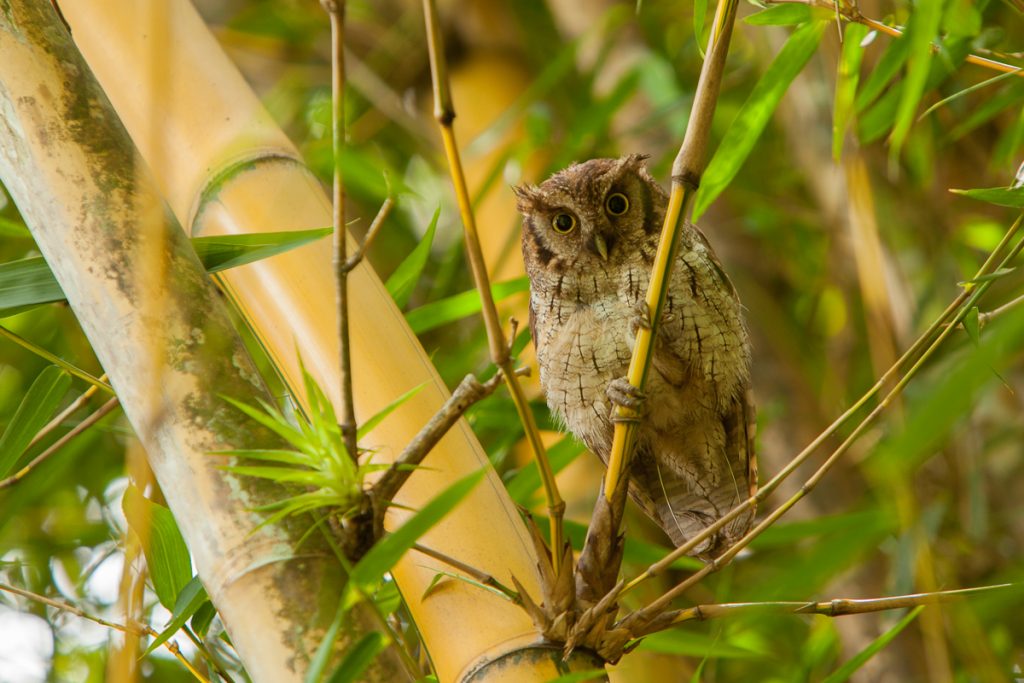
A small owl at home in suburban landscapes, farmland, city parks, and some of the Costa Rica’s wildest places alike are the screech owls. Ambushing their food from a low perch at night, screech owls are known to prey on an array of species including frogs, large insects, rodents, small reptiles, and birds. Screech owls of the same species can differ in color morphs greatly ranging from gray-brown to rufous. The rrrr WHOOOO call is an extended trill whistle followed by a resonating louder call.
___
A previous version of this piece was published in Nature Landings, the in-flight magazine of Nature Air.


